This page has been adapted from an e-mail I sent on January 16, 2006 to Thomas Farely of PrivateLine.com
From late 1971 through the middle of 1973, I worked for the C&P (Chesapeake & Potomac) Telephone Company in Northern Virginia. Specifically, I worked within the Western Electric refurbishing plant about half a mile south of the Pentagon. We processed all the phone equipment that was removed from houses and businesses within the C&P area, which included the District of Columbia, parts of Virginia, Maryland, West Virginia, and Delaware.
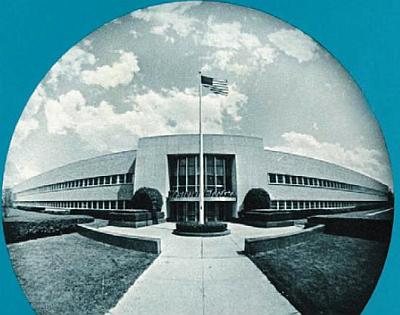
The phones would be dumped onto a conveyor and we had to pick each one up, check its model number and color, then sort them into specific chutes. Another person on the other side of the chute would match each set to a computer punch card and send them over to Western Electric for cleaning and repair. Equipment, other than the standard phones, were handled in other areas of the return dock. We swapped work positions around every week to keep each job from becoming too tedious. We processed an average of 14,000 telephone sets a day. Terrible job, at least for me.
Let me first talk about the building itself, and then the work I did there.
The building stands between Hayes Street and Fern Street in Arlington, Virginia, about half a mile south of the Pentagon. Above is a photo of the front entrance taken from a 1969 PR brochure produced by Western Electric about the facility.
The building is now The Pentagon Mall with stores such as Costco, Marshals, Borders, Linen 'n Things, Best Buy, and a bunch of small shops. In 2006, at the request of PrivateLine.com, I drove to the mall and shot some newer photos. I didn't go into Costco but looked in the door. The remodel did very little to the warehouse area except to remove equipment, paint the walls and replace the lights. The ceiling and walls still look exactly as they did in my 1972 photos seen further down the page.
The photo below shows the northwest corner of the building as it looked in 2006. To the extreme right, just behind the light pole, below the stop light, you can see the original main entrance as a square brick section that sticks up a bit higher than the round toped section which was added as part of the mall. This entrance was in the center of the building, so you can see this is a very large building.

The photograph below is the back of the building. The three bricked up docks to the left were the receiving docks where I worked. The 5 bays to the far right were the outgoing materials loading bays. The other bricked up bays were the new materials receiving bays.
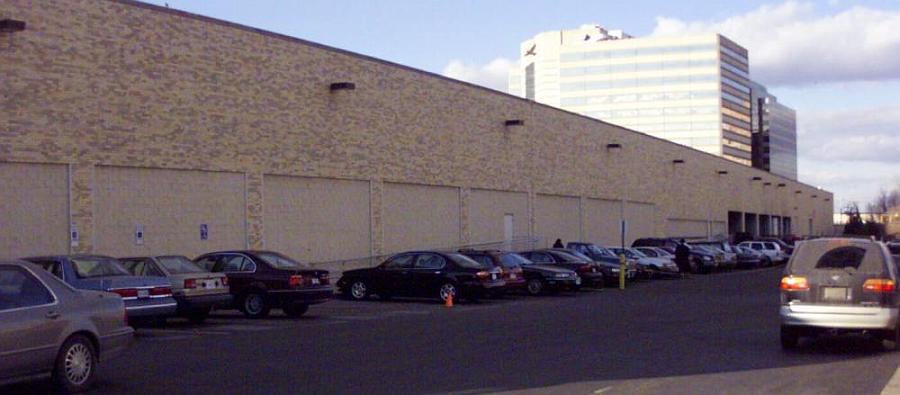
The next photo shows the south side of the building which was the original employee entrance and parking lot. The day I shot these photos was New Years Eve day, 2005 and the parking was totally crazy.

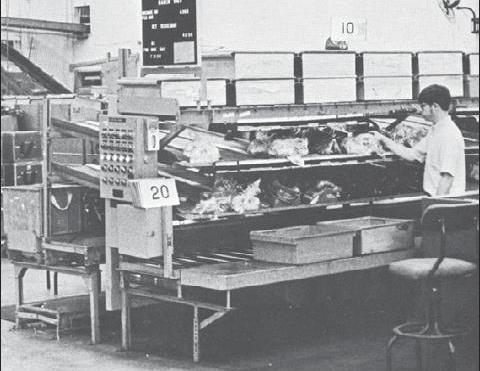
Now, let me talk about the work I did at the plant.
To the right is a view, taken from the same 1969 PR brochure as the blue picture above, of what the sorting area looked like when I first started. Two people would stand on the far side taking sets out of the shipping boxes, sort them and push them down the appropriate chute. A few months after I started, an additional conveyor was added which ran from about 50 feet to the left of the photo, then down the far side of the chutes to the end. This sped up the process more than tripling our capabilities.
The remaining photos were all shot in June 1972 during my lunch break, so there are not many phones in the chutes.
Below is the view from the other end of the phone sorting racks. Each row was for a different type, and color phone. The black type 500 sets are closest to camera in this photo. There were about 10 chutes dedicated to black 500 sets alone, there were a lot of black 500 sets. In contrast, the only other type that had more than 1 chute dedicated to a given model was the white 500 set, that one had 2 chutes near the other end.
A metal tray was taken from the row above, 4 to 6 identical sets would be placed in the tray, a computer card from the bins on the left would be placed with each phone, and the full tray was placed on the conveyor below the slots, where it was checked by a hispanic guy who didn't speak English but caught every error we made, then on to the other side of the plant to be refurbished. All the phones ended up going along the conveyor, through the opening you can see in the top left of the above photo. That's when they ceased being property of C&P and became property of Western Electric.
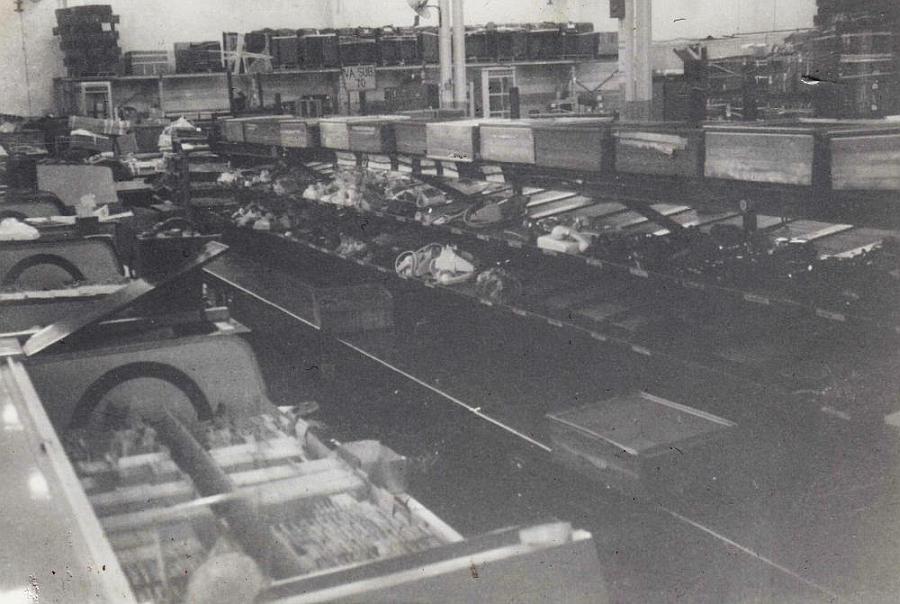
From a different angle the chutes can be seen below. In most cases we would wait until we had at least 4 of any given set, before placing them in the bins.
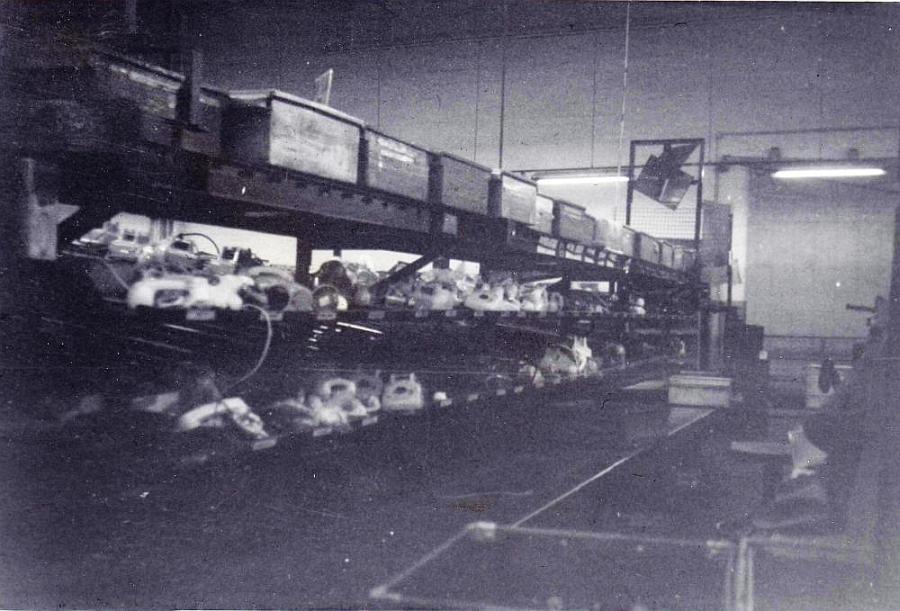
When we were moving along, it was about all 9 men could do to keep up with the flow. There were 3 men on each side of the chutes, and 3 taking sets out of bins and placing them on the new conveyor. The three on the upper side of the chutes were responsible for sorting phones into the correct chutes.
The computer cards, which can be seen more clearly in the photo below, were organized into the rotary bins closest to the areas where that type of set came down. I guess there must have been at least 400 or 500 different types of sets in various colors. There was a different card for each type and each color located in the bins in numeric order. One card for each phone set. The computer cards were already punched.
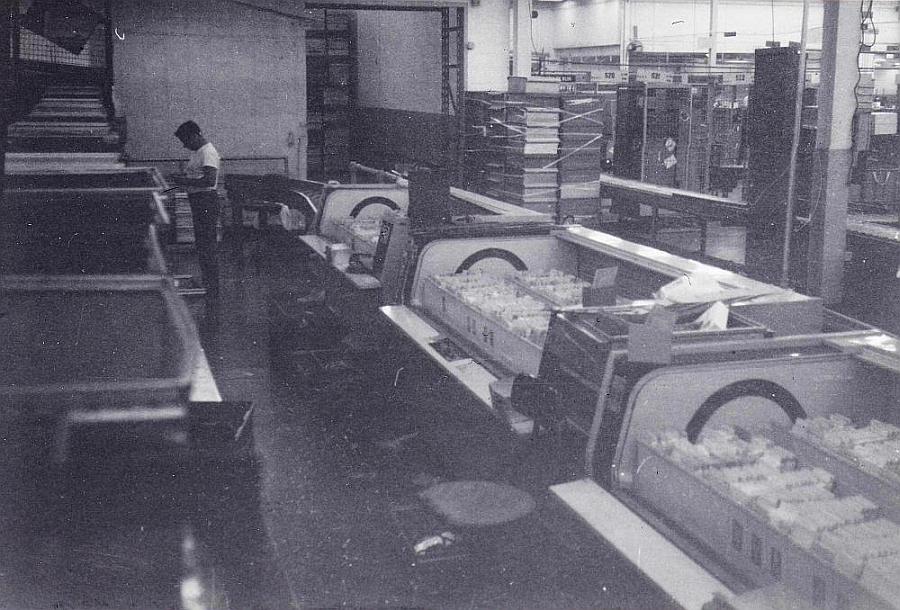
Each phone color had a number which was attached to the end of the model number. It was never actually on the phone itself, just referred to when dealing with the model. In 1973, the Bell System had 11 colors. 3=Black, 50=Ivory, 51=Green, 53=Red, 56=Yellow, 58=White, 59=Pink, 60=Beige, 61=Gray, 62=Aqua, and 64=Turquoise
The only time that I can remember that we couldn't find a card for a set was an incident with a modular phone. That phone came through the line with what I now know as a RJ11 jack on it. No one had ever seen one before and we had no computer card for it. The supervisor took it away and we never saw it or any other similar set while I was there.
Below you can see pallets of phones which had just come off the trucks, waiting to be sorted. Each open topped box contained 8 to 12 sets (depending on the model) and a pallet held from 9 to 35 boxes. What you see stacked here is about one half a day's run. On a busy day we would go through 3 times this many boxes.
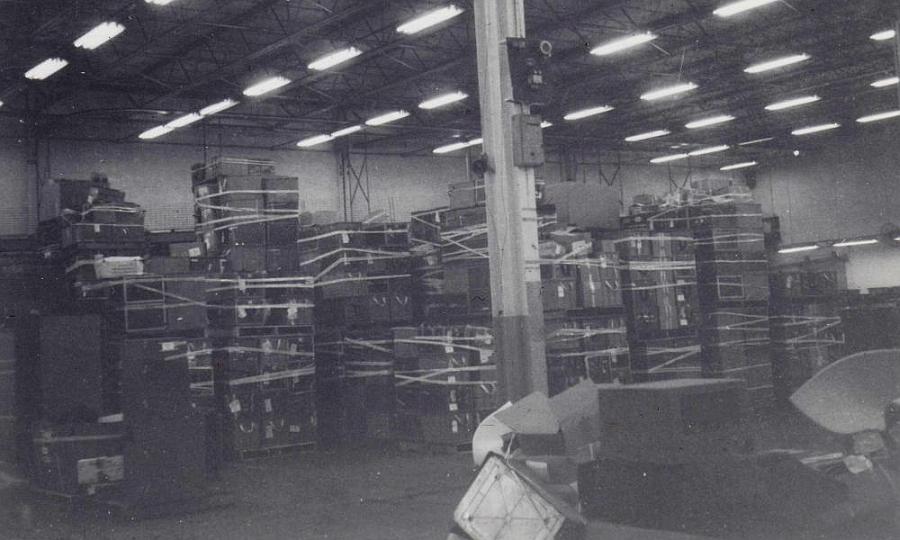
In the foreground below can be seen teletype machines, also slated for refurbishment. Further back and on the right is the phone sorting area seen on the above images. To make it a little easier to see, I have drawn a white line along the front of the new conveyor belt where the phones traveled from the shipping crates (on the opposite side of the conveyor from the teletype machines) to the chutes on the right of this photo.
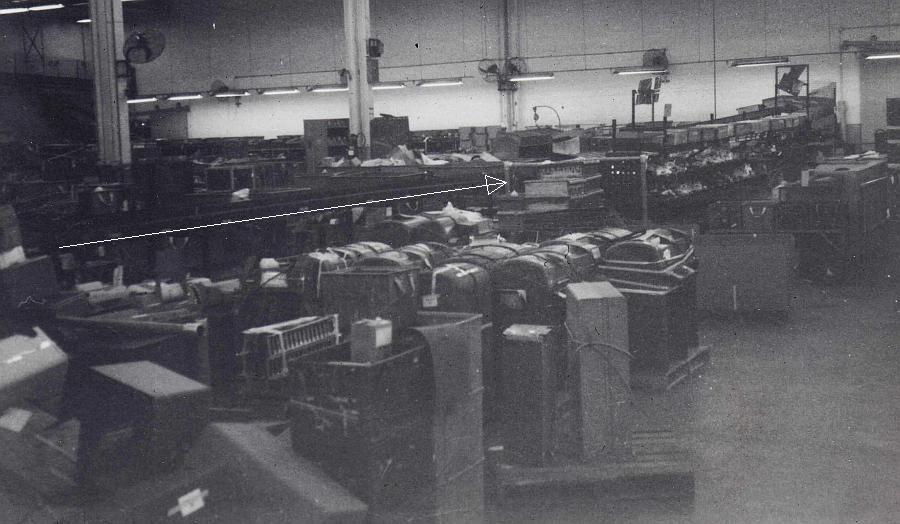
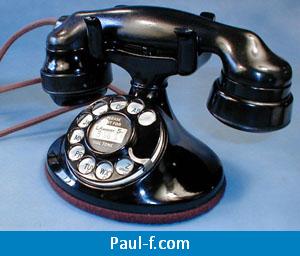
The oldest phone set I remember seeing in 1972 was a batch of the 1928 #200 series desk sets as shown to the right. I believe they were from West Virginia somewhere in the back mountain region. I remember asking which part of the state they came from when they arrived. I think there were about 50 or so of them.
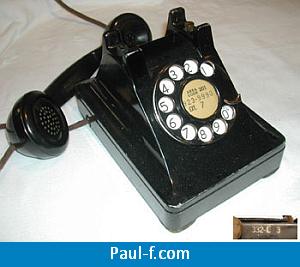
Much more commonly we saw many Western Electric #302 sets as seen on the left. I don't remember seeing any of the early die-cast zinc models. Most had the older bakelite handsets, and the majority had dials. The #300 sets came from all areas of the C&P system. These sets were broken down and the materials were recycled or sent to the landfill.
Below is a shot of what they called the "misso" area. It was many years later before I realized they were referring to miscellaneous. This included small parts and such things as single step switch units or tools. Just about everything except phone sets and big items came through this area.
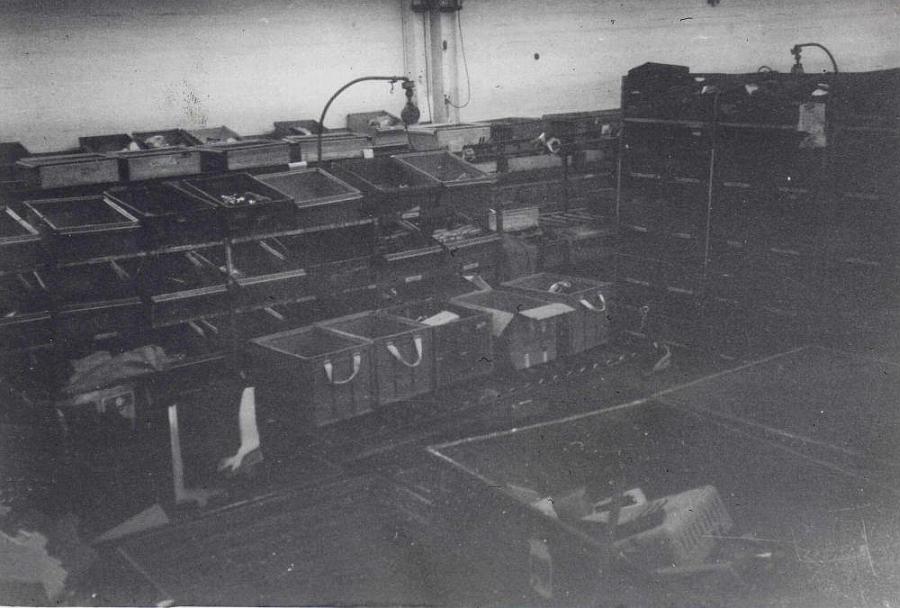
When I first started working there, we used the "misso" area to sort Trimline sets. About every 2 weeks we would take a day to handle the Trimline phones. Because of their shape they didn't work well on the chutes. When I first started there, they were processing the Trimline phones by trying to coil the cords up around the set-base and place the combined set in the trays. By the time we pulled them out of the shipping case the cords usually ended up very tangled and made sorting extremely tedious.
I made the suggestion that if the cords were removed, the separated handsets and bases could be rolled down the regular chutes. Apparently my supervisor liked the idea. I don't know what transpired in the head offices, but a few weeks later, the Trimline phones started coming in without any cords on them. I guess they had the installers remove them. The cords came in a large pallet bin and were sent directly to recycling. This reduced the time it took us from a full day every 2 weeks or so to just a couple of hours. It ended up backfiring for me though. The repetitive high-speed body twisting that resulted from the increased speed up, ended up causing me back trouble years later.
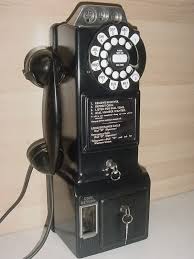
We saw many of the 3-slot coin pay phones. Back then they were still being refurbished and sent back out into the field. I remember being discusted by some of the guys. If they picked up a pay phone and heard coins in it, they would often slam the phone on the concrete floor, occasionally destroying the phone, to get the dime out. Thinking back on that, it actually showed just how tough those units were built.
Most of my younger life, I wanted to be a telephone installer. When I first began my job with C&P, they told me the position was intended to last about six months, after which they would move me out into other parts of the company. After a bit over two years, I was still in the same place, doing the same tedious job and starting to go nuts. Repetitive tasks become very boring to me very quickly. If my mind isn't actively working on solving problems or learning new things, I lose interest quickly. I enjoy jobs that involve troubleshooting and helping other people, especially in the electrical and computer fields. I ended up resigning in the summer of 1973.